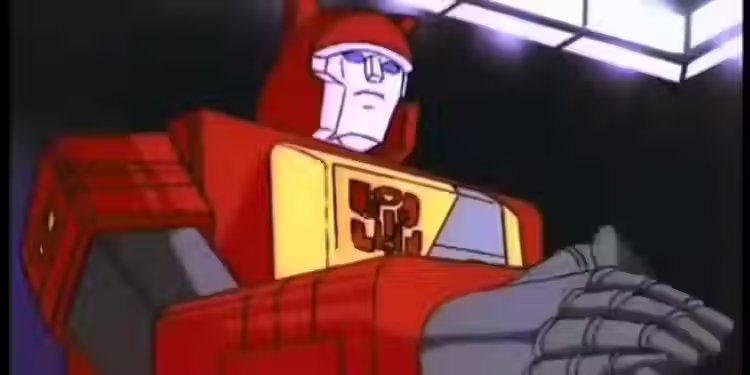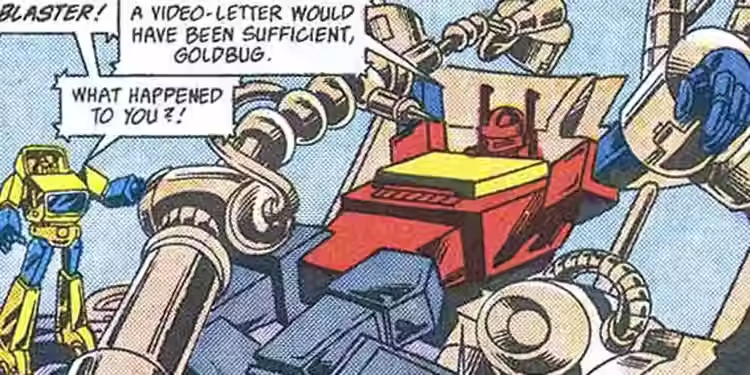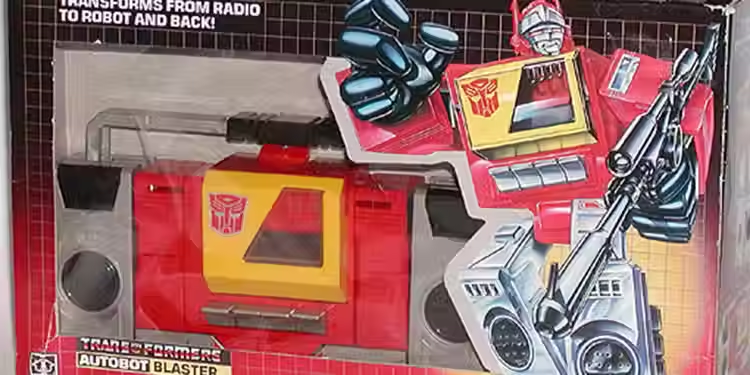This weeks Your Nerd Side Show:
There are several iconic characters in the Transformers franchise, with many of them debuting in the original Generation 1 incarnation of the series. G1 began the franchise with two major media adaptations: a cartoon and a comic book. Although they were based around the same concept, the robots featured in each medium would receive different levels of focus and even more divergent characterizations.
A great example of this was Blaster, who was a big part of the cartoon's second and third seasons. He played the same role in the Autobot army in both the comics and the animated series, but little differences led to big changes in terms of how he was developed. Far from a hip and happening 'bot, the printed page made Soundwave's rival into a far more dour individual.
Transformers: Season Two Added the Autobot Blaster

Introduced in Season 2 of The Transformers, Blaster was one of the many new Autobots whose presence was only explained by the fact that Hasbro had toys to sell. Like Jazz, Blaster was portrayed as a fun-loving robot with a deep appreciation of Earth's popular culture, namely music. This fit his name and alternate mode, as he transformed into a boombox (or "ghetto blaster"). Fittingly, he also had a legion of loyal Mini-Casette Transformers inside his chest, with Steeljaw, Eject, Rewind and Ramhorn being the main ones.
His role among the Autobots made Blaster into their version of Soundwave, who also specialized in communications and had a cassette player alternate mode. Whereas Blaster was boisterous and convivial, Soundwave was digitized and monotone, coming off as more robotic than any other Transformer. This culminated in the episode "Auto-Bop," where the two fought a musical battle in a club. Soundwave's army of cassettes also fought against Blaster's during Transformers: The Movie. Afterward, he remained a firm part of the cast into the series' third season, continuing to speak in rap and spouting off cool lingo.
Transformers anime continuity gave him a major development. In Transformers: The Headmasters, Blaster and Soundwave had a final battle that saw them both brutally destroyed. They were then rebuilt, with Broadcast (Blaster's Japanese name) becoming Twincast while Soundwave turned into Soundblaster. This would be the last time for a while that either of them were a major part of the franchise, though it wasn't the only different G1 version of Blaster.
Marvel's Transformers Comic Completely Changed Blaster

Although they came out concurrently, The Transformers and Marvel Comics' Transformerscomic book handled the franchise very differently. Certain iconic Autobots and Decepticons had much smaller roles in the comic book, whereas other characters were given the spotlight in their stead. For instance, veritable kid appeal/sidekick Autobot Bumblebee was only somewhat prominent, while Megatron's loyal lackey Shockwave was made into a bigger backstabbing threat than Starscream. Blaster, on the other hand, was far more integral than he had been on television. His role as a communications officer was somewhat diminished, and his combat skills were emphasized instead. His usefulness on the battlefield was coupled only with his rebellious attitude, causing him to constantly mouth off at authority figures. This included both Autobot leader Optimus Prime and the Dinobot Grimlock, his temporary replacement.
His jive-talking characterization from the cartoon was nowhere to be found, making his alternate mode more incidental than anything. As a whole, he was rather moody and brooding, with his explosive attitude stemming from his hatred of Decepticons. Conversely, the comics also gave him a design closer to his action figure, further differentiating the two incarnations. Strangely enough, he would rarely interact with Soundwave, with one of his biggest Decepticon enemies being the comic-exclusive Lord Straxus of Darkmount. He'd remain a part of the cast throughout the many additions and changes made to the comics, again owing to the continued popularity of his toy. This allowed him to be a much more well-rounded Autobot, instead of simply falling back on his already dated DJ gimmick from the cartoon. Nevertheless, this more developed and nuanced take on Blaster didn't make much of a splash among the fandom.
Blaster's Best Incarnation Has Been Forgotten

Despite how prominent he was in the G1 comic books, this take on Blaster has largely been overlooked when compared to the cartoon. The animated series is so far the only "mainstream" take on Blaster, and this partially stems from his alternate mode. Both Blaster and Soundwave, despite their popularity, went decades without updates of their original selves, and it could be attributed to their originally transforming into now outdated media players. The popularity of the Beast Wars era didn't help, but fans were always going to be attached to these characters' unique original forms. This is why the helicopter Decepticon Blackout from the first live-action Transformers movie was initially considered to be Soundwave until the major change in alternate mode was poorly received. There have been a few new incarnations of Soundwave that update the original version, though Blaster simply hasn't had the same amount of appearances.
Fan-oriented projects and toylines such as the Transformers: Universe series thankfully offer a chance to highlight older and overlooked characters from the franchise. Alongside a reissue of his original toy, Blaster has had a few new figures in these lines, with the biographical descriptions essentially melding his two incarnations. His fiery persona and distaste for Decepticons is now due to their violence destroying Cybertron's art and music scene, perfectly combining the hard-headed freedom fighter version with one who simply loves a good tune.
Blaster wasn't the only major character to get this kind of change in the comics, however. In the G1 cartoon, Grimlock and the rest of the Dinobots were as dim-witted as their prehistoric alternate modes suggested, with the subgroup speaking in a fractured, caveman-esque tongue. The comic book version of Grimlock instead had an almost thuggish brutality, and while still rather primitive in nature, he was far more eloquent and intelligent. That's not even getting into all the other characters who only ever had a major role in the comic book, as the cartoon had already ended by the time their toys released. This shows how different versions of a franchise can offer different spins on the same character, with Blaster's two takes for a long time being almost completely incongruous.
Comentarios